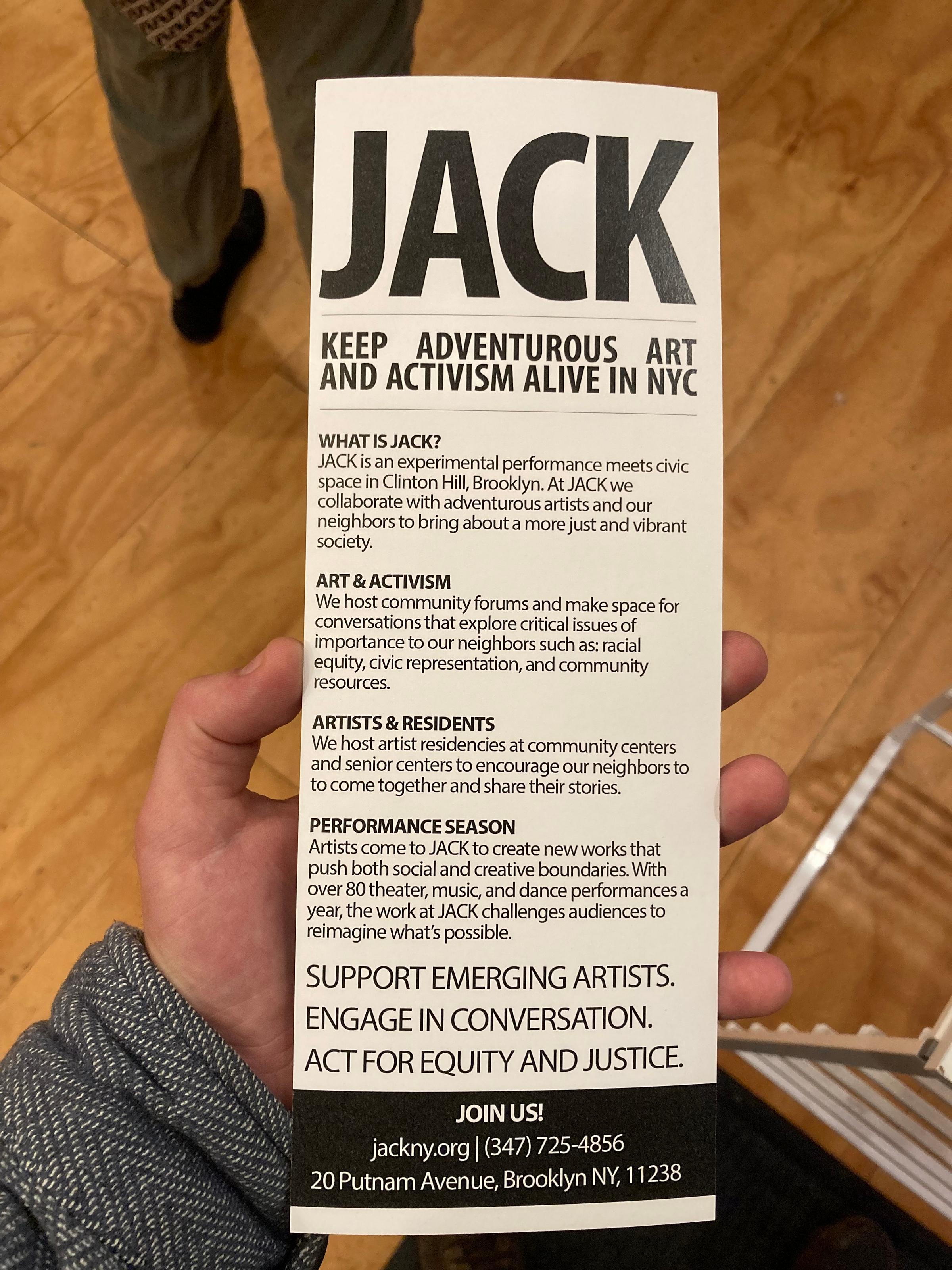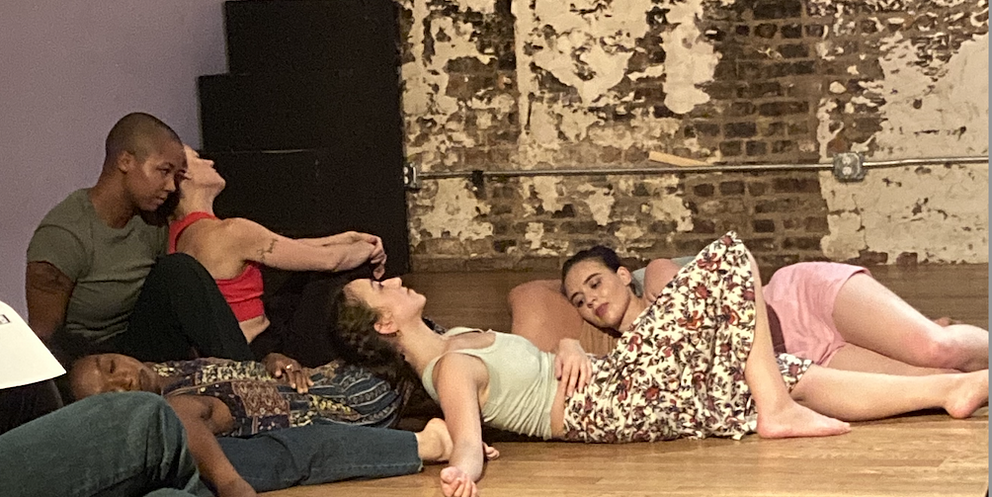In Lieu of the Option …
The Dynamite Experience
JACK Theatre
Brooklyn, N.Y.
Sept. 21, 2023
Closede
The group holds a lone member above the ground by her fingertips. A trio becomes
furniture for itself, restful positions on the floor serving to provide support for someone else.
Foreheads pressed together, two couples spin counter to each other, threatening to upset their
opposite’s balance. Tender moments of the entire cast wrap up together before breaking back into a sea of difference. The interactions between the dancers run the gamut of human intimacies and conflicts — no solos, the smallest arrangement being a single number done as a pair; and even here, another performer clamored in the periphery, on the ground, reaching up and begging to join.
In In Lieu of the Option…, choreographed by Winston Dynamite Brown and Latra A. Wilson, every landed jump, tumble, or sprint across the stage resounding in the black box of JACK Theatre, the soft, measured breathing of the ensemble in the quiet between selections, and the heat of life thickening the air reminded me that dance is no formal exercise of theoretical bodies-in-spaces, but a display of conscious movement.
Wilson and Brown’s ensemble of dancers, seven in total, was quite a crowd for such a space. But the choreography seems to have been written with this in mind —t he Option we exist in lieu of is to be alone, for our individuality to preponderate, the ability to exist without consideration for others. There is no choice here. There are more people than myself.
Brown and Wilson, instead of depicting the single self’s struggle against the mass of the other, choose to wrangle with the complex interactions that arise from the fact of the mass as a priori. Through ten dance numbers, scored by live performances of early Wayne Shorter tunes, the ensemble breaks apart, regroups, shrinks, and grows.
The threat of conflict, the few moments where the audience is asked to decide where to put their focus, is quashed immediately by the choreography’s overarching approach. The significance of difference is elided by the fact that every dancer, at any moment they are on stage, is given something to do wholly. Even when they are asked to lean against the wall, or sit on the ground and simply observe their comrades, they are made to be active.
I have it from Jake Richter, the accompanying band’s drummer, that this was precisely Wilson and Brown’s intention: “During rehearsals, Winston would stop to remind the dancers that when they lean they should do it with their whole weight. When they collide, it’s got to be real, and when they’re held they should be ready to fall… He’d describe the intentions behind every touch—‘embrace as though you were family’ or ‘now, this is because you are lovers…’ ”
Which brings up another aspect of the performance that would be remiss to leave unmentioned: The ensemble was entirely femme. Individual identities aside, it is worth having said that the feminine form is, for better or worse, loaded with meaning — there’s the risk of objectification, the performance becoming a sapphic spectacle, or, for fear of the former, the whole being rendered a gray display of sexless, inhuman anhedonia.
This is not to say that the sapphic was absent altogether, but it is to say that Wilson, Brown, and their ensemble constructed something transcendent.
Through a choreography I am led to believe was in part free in its construction by individual dancers, but also meticulously imbued with emotive intention and specific visual metaphor by Brown and Wilson, the piece moves with an admirable ambiguity through its narratives of separation and community.
All the more reason the music of Wayne Shorter was an excellent choice for the score. Fractious melodies and barely functional harmony — in short, unrelenting ambiguity — has always been, for me, the hallmark of his music. Shorter operates in a haze from which the listener must create the whole, and the difficulty therein is indicative of the limitation of one’s own listening. It was played well and knowingly by the quartet, serving all the more the performance on stage, adding a solid swing to ground the complexities of the Option’s collision and caress…







